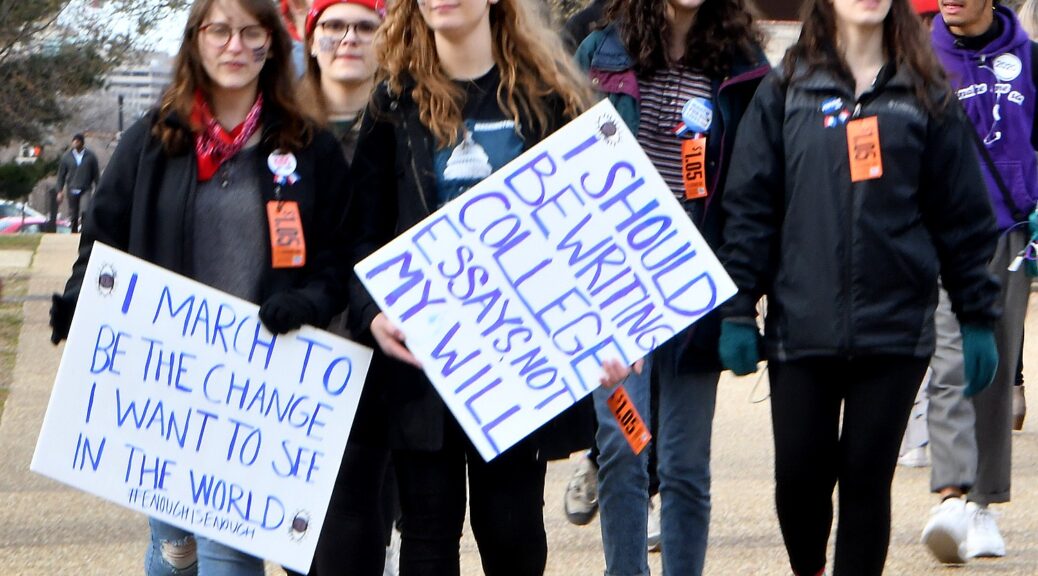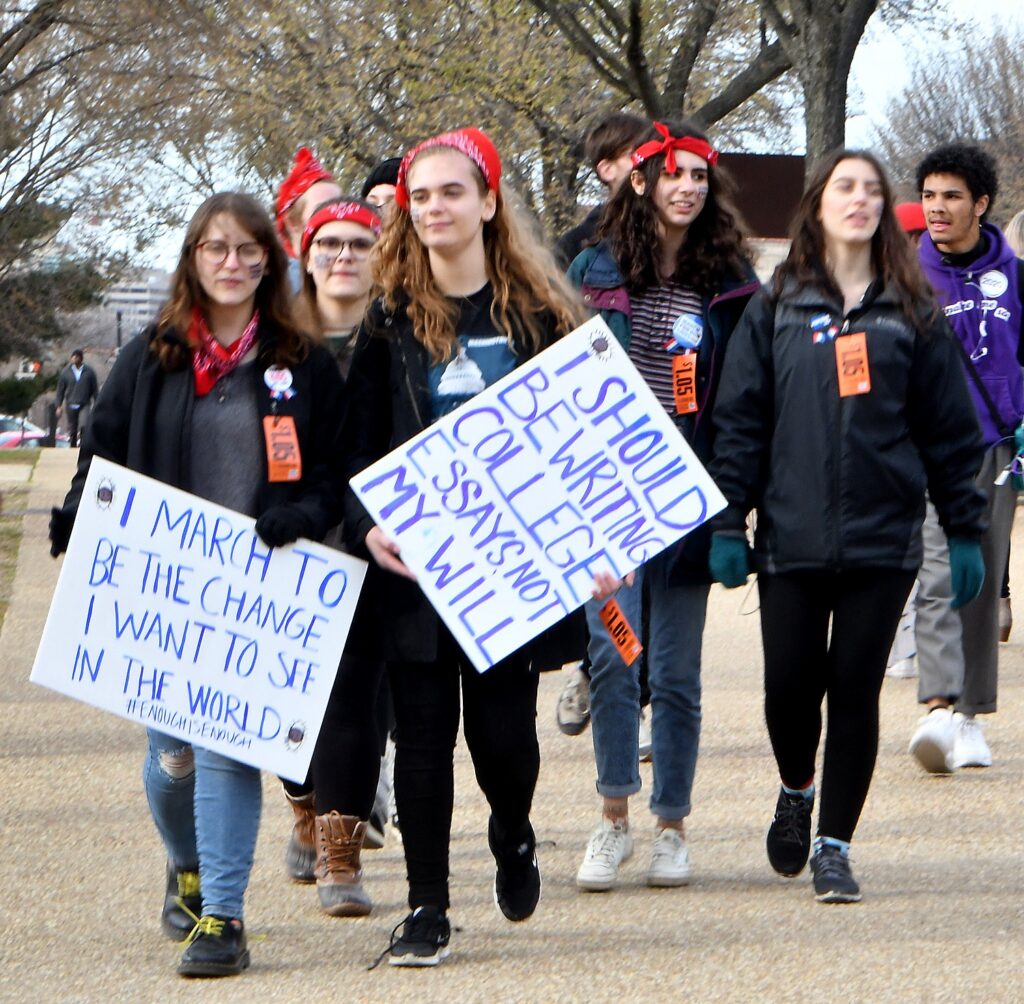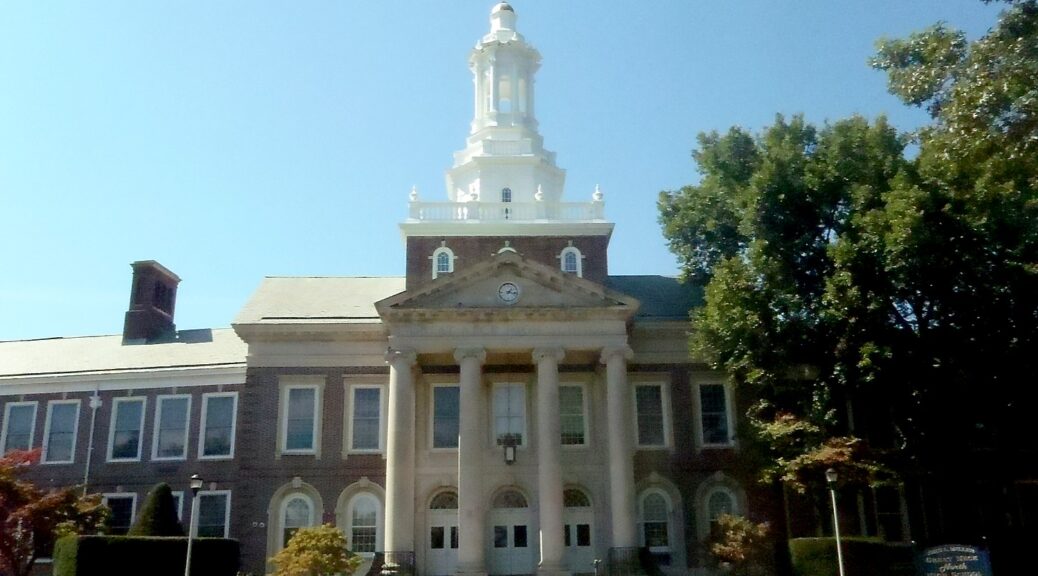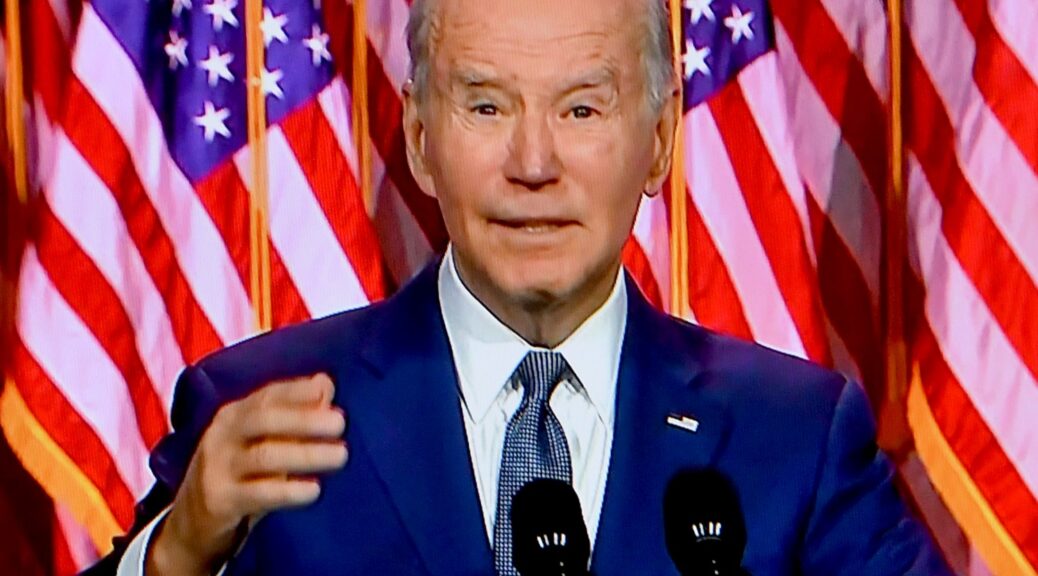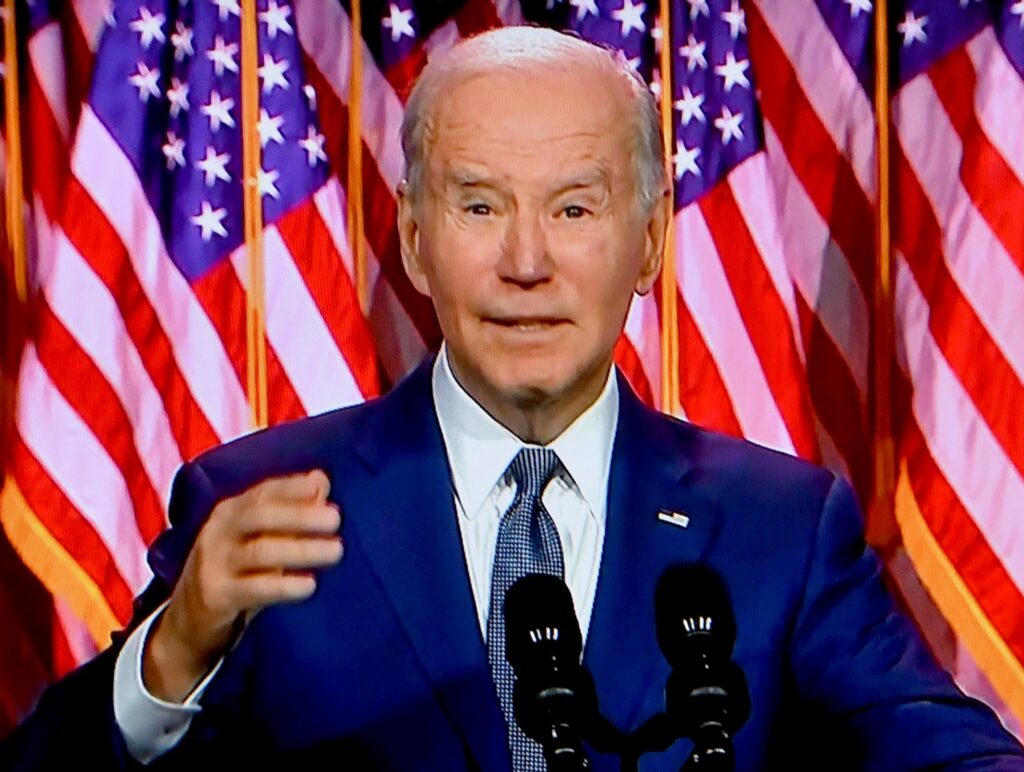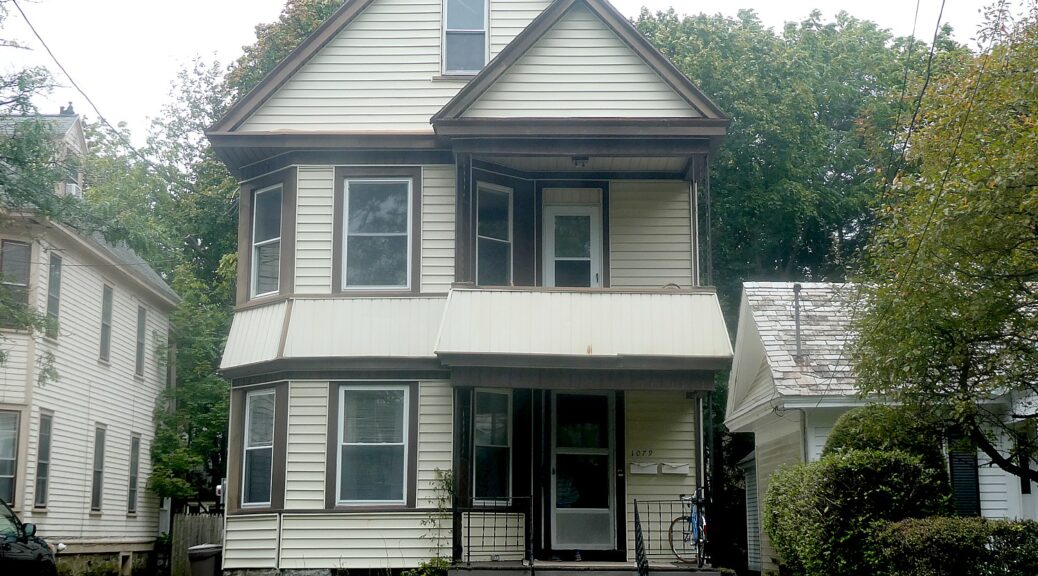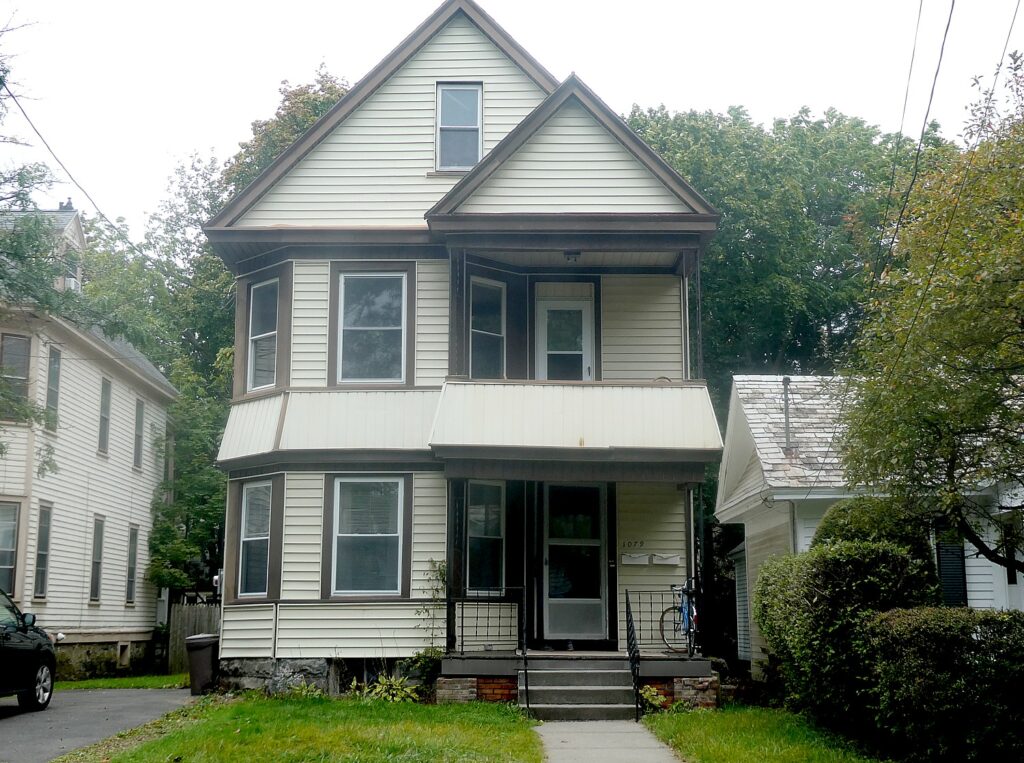Today, President Joe Biden and First Lady Jill Biden convened a meeting of the Cancer Cabinet to announce new actions federal agencies are taking to advance the mission of the White House Cancer Moonshot, as well as new commitments the Biden-Harris Administration has secured from non-governmental organizations and the private sector to deliver progress on the mission to end cancer as we know it.
Last year, the President and First Lady reignited the Cancer Moonshot with the goals of reducing the cancer death rate in the United States by at least half—preventing more than 4 million cancer deaths—by 2047 and improving the experience of people who are touched by cancer. The President also established a Cancer Cabinet to mobilize the entire Biden-Harris Administration in pursuit of these ambitious goals. In the time since, the Cancer Moonshot has announced roughly 50 new programs, policies, and resources and secured more than 100 commitments from private companies, non-profit organizations, patient groups, and more toward the President’s and First Lady’s goals.
Accelerating the fight against cancer is a core component of the President’s Unity Agenda, a set of priorities that Americans from every walk of life can support. In his State of the Union address earlier this year, President Biden laid out a bold vision to advance his Unity Agenda, including the work of the Cancer Moonshot, specifically by driving innovation that changes patient outcomes, providing support to families as they navigate a cancer diagnosis, and preventing cancer by tackling the biggest single driver of cancer deaths in this country—smoking. Today’s actions build on the progress the Cancer Moonshot has delivered since then, and at today’s Cancer Cabinet meeting, the President and First Lady will hear from Cabinet leaders on the progress made and the important work ahead.
“Joe Biden is determined to be a president for all Americans,” White House deputy chief of staff Bruce Reed said in a statement Tuesday. “That is why his Unity Agenda is about making progress on the biggest challenges we all face regardless of party. At his direction, the entire federal government is mobilizing like never before to end cancer as we know it.”
Advanced Research Projects Agency for Health is announcing $240 million in investments to fund research and innovators this year for cancer-related projects, as well as a new partnership with the NIH, the National Cancer Institute to launch a so-called Biomedical Data Fabric Toolbox, which the administration says will be “the first step toward transforming data accessibility across all medical domains.”
In addition, new programs from the US Centers for Disease Control and Prevention, the Health Resources and Services Administration, the Department of Health and Human Services, the Department of Veterans Affairs, and the Environmental Protect Agency will seek to expand cancer care to underserved communities, reduce the impact of smoking in underserved, minority, tribal, and veterans’ communities, and invest in community centers offering cancer screenings.
And NASA, in partnership with the International Space Station, will also announce funding for in-orbit research projects to advance cancer technology.
Biden unveiled his “Cancer Cabinet,” as part of his administration’s broader Cancer Moonshot initiative in 2022. It’s made up of representatives from the Departments of Health and Human Services, Veterans Affairs, Defense, Energy and Agriculture, as well as the Environmental Protection Agency, the National Institutes of Health, the National Cancer Institute and others across the executive branch.
For her part, First Lady Jill Biden has used her platform to support cancer patients and their families, participating in more than 40 Cancer Moonshot events in 16 cities across almost a dozen states, per the White House.
The issue remains a personal one for the Biden family – both have had cancerous lesions removed as part of routine checkups, while their son, Beau Biden, died of a glioblastoma brain tumor in 2015.
Today’s announcements from the Biden Cancer Moonshot include:
- $240 million in additional investment this year to accelerate new ways to prevent, detect, treat, and survive cancer. The Advanced Research Projects Agency for Health (ARPA-H) will award an additional $240 million to researchers and innovators this year for cancer-related projects. This includes projects to develop new tools to detect cancers early, when cancers are most treatable; produce innovative approaches to visualize cancer cells during surgery to improve patient outcomes through the Precision Surgical Interventions program; pursue new treatment approaches, like directing bacteria to kill cancer inside the body; and design devices that could deliver treatments directly to cancer cells to treat tumors more effectively.
- A new “biomedical data fabric toolbox” to advance cancer research progress. ARPA-H is partnering with the National Institutes of Health, the National Cancer Institute (NCI), and other agencies to develop a new Biomedical Data Fabric Toolbox for Cancer. Starting with cancer datasets, this program represents the first step toward transforming data accessibility across all medical domains, promising a future of boundless possibilities in health innovation. Today, cancer research data is collected across thousands of research labs, clinical care organizations, and numerous other sources; these entities all store their datasets differently, making it difficult for cancer researchers to leverage the full potential of massive amounts of data that exist. This initiative will pioneer prototype technologies capable of seamlessly searching cancer datasets to reveal opportunities for groundbreaking disease detection, prevention, and treatment, reduce the time needed to integrate new data sources from months to days, and improve data usability by the research community—so we can break down existing data siloes and learn from the experiences of more patients. This project will help bring America’s cancer research system into the 21st century by transforming our health care system for cancer into a learning system, ensuring that knowledge gained through research is available to as many experts as possible, and delivering discovery and breakthroughs to patients sooner.
- A new nationwide health innovation network to bring cancer clinical trials to underserved communities and drive research progress. ARPA-H is announcing that it’s new ARPANET-H, a nationwide health innovation network to tackle pressing health challenges, will be deployed to accelerate clinical trials for cancer and other diseases. This new network will reach all 50 states and the District of Columbia, and create a continuous feedback loop with patients, providers, researchers, and others that improves the goals, reach, and data sharing capabilities across ARPA-H programs to foster breakthrough collaborations and advance equitable health outcomes. ARPANET-H will comprise Customer Experience, Investor Catalyst, and Stakeholder and Operations hubs, along with a network of supporting spokes that connect local organizations, health providers, companies, and others to ARPA-H’s work. This new network will enable historically underserved populations to actively participate in clinical trials, improve equity in access to innovative cancer interventions and accelerate the agency’s work to drive breakthroughs in preventing, detecting, and treating cancer and other diseases.
- New investments to reduce the impact of menthol and other flavored commercial tobacco products in communities that experience health disparities. The Centers for Disease Control and Prevention is announcing awardees of a new five-year, $15 million program to help increase adoption, implementation, and enforcement of policies prohibiting the sale of menthol and other flavored tobacco products and increase awareness of cessation services and coverage options among populations experiencing tobacco-related disparities in order to accelerate smoking cessation.
- A new award recognizing community health centers for exceptional performance and high clinical quality in cancer screenings. The Health Resources and Services Administration (HRSA) is launching a new National Quality Leader (NQL) – Cancer Screening Badge. Federally qualified community health centers that meet two or more of the Healthy People 2030 breast, cervical, and colorectal cancer screening targets in their annual Uniform Data System performance report will receive the new NQL – Cancer Screening Badge. This badge, which will be awarded annually, was created in support of the Cancer Moonshot’s call to action on cancer screening, and highlights the critical role health centers play in providing historically medically underserved, high-need communities with access to lifesaving cancer screenings. In 2022, community health centers—which provide comprehensive, high-quality primary health care services tailored to their communities regardless of their patients’ ability to pay—served more than 30 million patients nationwide.
- A new plan to decrease the impact of smoking on Americans’ health by expanding efforts to prevent smoking and to support everyone who wants to quit. While the United States has made important progress, smoking remains the biggest single driver of cancer deaths in the country. To ensure Americans who want to quit have the support they need, the Department of Health and Human Services (HHS) will finalize its Framework to Support and Accelerate Smoking Cessation this year. This Framework, which was developed with public input, will be a roadmap for enhancing collaboration and coordination across HHS—and with federal agencies and non-governmental organizations—to equitably accelerate smoking cessation progress, with a specific focus on communities disproportionately impacted by tobacco use.
- New smoking cessation resources for underserved communities, including American Indian, Alaska Native, and Black communities, to reduce cancer health disparities. NCI’s SmokeFree.gov initiative is extending a partnership with the Indian Health Service to collaborate with experts from the University of Minnesota School of Public Health and the American Indian Cancer Foundation to launch SmokeFreeNative, a text messaging program to help American Indian and Alaska Native adolescents and adults quit smoking, while honoring the significance of traditional tobacco. Additionally, NCI is launching digital resources this fall on www.smokefree.gov to encourage and help people who smoke menthol cigarettes to quit. These resources were created to address barriers to quitting in communities that experience disparities caused by menthol cigarette use, with a particular focus on Black communities.
- A new pilot program to increase veteran engagement in tobacco use treatment. The Department of Veterans Affairs (VA), in collaboration with NCI, will conduct a clinical demonstration project to assess how to more effectively engage veterans in tobacco-use treatment programs. This clinical demonstration project will be implemented in the next year across a subset of Veterans Integrated Services Network clinical resource hubs and aims to address the high rates of tobacco use among veterans with mental health disorders and address gaps in the provision of treatment across facilities.
- New resources and actions to reduce exposures to environmental carcinogens. The Environmental Protection Agency (EPA) is launching epa.gov/cancer, with new information and prominently featured resources from EPA and other federal agencies about secondhand smoke, smoking cessation, and other cancer-related topics. New regulatory efforts, through rules and standards in progress, will regulate unreasonable cancer risks associated with carcinogenic chemicals under statutes including the Toxic Substances Control Act, the Safe Drinking Water Act, and the Clean Air Act. EPA will also continue to leverage its existing authorities under our nation’s bedrock health and environmental laws to accelerate the rate of progress to prevent cancer, including phase-outs of carcinogens, regulatory actions to protect children, workers and overburdened communities, and enforcement actions to ensure pollution is curbed. The Administration’s efforts to fight cancer linked with environmental exposure also advance President Biden’s commitment to environmental justice for all.
- Leveraging research in space to fight cancer on earth and amplifying awareness on cancer screening. NASA’s Division for Biological and Physical Sciences, in partnership with the International Space Station (ISS) National Laboratory, will fund several projects to advance cancer research and technology to take place in-orbit on the ISS. Projects will aim to develop new cancer treatments, broaden research advancements, foster new collaborations, and accelerate biomanufacturing. Additionally, NASA is piloting early cancer screening education videos, partnering with VA to drive targeted education on lung cancer screening for veterans.
- A new partnership to further understanding of the impact cancer has on America’s veterans. In alignment with the Sergeant First Class Heath Robinson Honoring our Promise to Address Comprehensive Toxics (PACT) Act of 2022, VA and NCI are announcing a new partnership to develop a two-way exchange process to collect more data on cancers in VA patients. This process will allow NCI’s Surveillance, Epidemiology, and End Results (SEER) Program and the VA cancer registry to work together to gain crucial insights on veteran cancer diagnoses and treatments, while maintaining and protecting veteran privacy. Prior to this effort, data exchange was sporadic and incomplete, resulting in a lack of complete information on cancer in this important population. This collaboration will help us better understand—and ultimately treat—cancer among veterans and all Americans.
- An expansion of virtual cancer care for America’s veterans. VA is announcing that it is adding more than 30 new sites to its VA National TeleOncology program, which provides resources and staff support through partnerships with VA medical centers nationwide. This program makes highly specialized care, like virtual tumor boards for multiple cancers, available to veterans, in particular, living in rural locations.
The Cancer Moonshot is also announcing the following new commitments from non-governmental organizations:
- The American Cancer Society (ACS) will create a new oncology professional navigator curricula and certification program. In 2024, the ACS, with input from key partners, will lead the creation and implementation of a standardized national curricula for professional, non-clinician navigators to support people with cancer. Navigation by trained professionals in clinical settings is an integral component to improving cancer outcomes in the United States, helping to ensure every cancer patient has access to timely, quality, and culturally competent care, especially in historically marginalized communities. Additionally, ACS with will work with key partners to establish new programs such as navigator certification to support evaluation and adherence to best practices that align with improved outcomes.
- The HealthWell Foundation will provide more than $300 million in 2024 to underinsured oncology patients to offset out-of-pocket medication costs. This will enable these patients to adhere to prescribed treatment regimens, and improve survival. In 2024, HealthWell will also start providing financial assistance to address disparities in oncology clinical trials and to support oncology caregivers—self-funding $500,000 for the program.
- The African American Tobacco Control Leadership Council (AATCLC) is launching a coordinated effort to make Emotional Brain Training (EBT) services available for stress management and smoking cessation. In collaboration with the University of California, San Francisco Smoking Cessation Leadership Center, AATCLC will launch a coordinated effort within three months to promote the use of a free app for anyone new to EBT to gain easily scalable, rapid-acting tools to assist with smoking cessation. EBT has shown long-term effectiveness in treating stress overload, as well as mood and addictive behaviors including smoking.
- CVS Health will be launching an expanded smoking cessation program in a dozen states. In addition to their currently offered smoking cessation and counseling, CVS Health will launch a comprehensive smoking cessation assessment, prescribing and counseling program at its retail pharmacies in 12 states, further increasing patient access to smoking cessation care. Combined with its expanding digital capabilities, CVS Health will be able to reach patients in their neighborhoods, helping address health disparities and breaking down barriers to care, building on their commitment to not sell tobacco products.
- Komodo Health, a health data and technology startup, is announcing a new platform to measure cancer disease burden, map cancer outcomes, and illuminate disparities in cancer care. Over the next two years, this effort will deliver insights to help public health officials, government agencies, and patient advocacy organizations to directly support efforts to close the screening gap and decrease the impact of preventable cancers. Built on more than 330 million patient experiences, Komodo’s platform can be used to spotlight gaps in care, identify disparities in disease burden, and understand the impact of cancer on discrete patient populations. This research will enable public and private partners to direct resources to reduce the burdens of lung cancer.
- The Leukemia & Lymphoma Society (LLS) will invest more than $17 million to bring clinical trials and treatment innovation to diverse and underrepresented communities across the country. For example, LLS is expanding its Influential Medicine Providing Access to Clinical Trials (IMPACT) Research Grant Program to include seven major, geographically diverse cancer centers and surrounding local cancer care delivery settings, to bring blood cancer treatment studies into more communities. As part of the investment, LLS’s Equity in Access Research Program will spend $2.5 million withing the next year to initiate multi-year studies addressing systemic, institutional, clinician, and patient-related barriers to trial participation. In the next five years, LLS aims to improve the speed of innovation and expand equitable access to treatments that have the potential to increase blood cancer patients’ quality of life and survival.
- TOUCH, the Black Breast Cancer Alliance, will bolster Black women’s breast cancer clinical trial participation by 2025 committing to reaching 350,000 Black women and motivating 25,000 into trial portals. Additionally, TOUCH Care, the first program to provide a nurse navigator service to assist Black breast cancer patients in clinical trials by developing culturally-agile recruiting materials, training trial staff, and coaching patients, is being piloted with Genentech, a member of the Roche Group, and will add five trials annually. Less than three percent of breast cancer clinical trial participants are Black.
- xCures, a health-data technology platform, is launching a study to enhance the collection and organization of comprehensive data for Diffuse Midline Glioma (DMG) and Diffuse Intrinsic Pontine Glioma (DIPG). The study will streamline and standardize data gathering and identify patterns that can predict disease progression and treatment response, leading to more personalized treatment plans and targeted therapies. xCures pledges to maintain the data infrastructure for this study, and to make the data freely available to academic and government researchers. This will improve access and collaboration, with the ultimate goal of bringing innovation to more patients and providing a better understanding of these deadly cancers.
- The DIPG DMG Research Funding Alliance is launching an online hub to support pediatric brain cancer patients from diagnosis through treatment and grief support. This hub, DIPG OneLink, will provide entry to two complementary data registry studies by the Children Brain Tumor Network and xCures, enrolling 250 DIPG/DMG patients in 2023 and expanding to over 700 patients by the end of 2024. The project will collect, store, and harmonize clinical records, imaging, and multiomics information that will be readily accessible to families and researchers.
- The Focused Ultrasound Foundation (FUSF) is committing more than $3 million over the next three years for clinical trials exploring focused ultrasound as part of cancer treatment. In partnership with the Cancer Research Institute and the Parker Institute for Cancer Immunotherapy, FUSF has defined a roadmap to move towards clinical adoption of focused ultrasound and cancer immunotherapy combination treatments in glioblastoma, diffuse midline glioma, pancreatic cancer, liver cancer, breast cancer, and pediatric solid tumors. In addition, and in partnership with Arms Wide Open, FUSF will co-fund a preclinical research project exploring focused ultrasound for neuroblastoma.
- The National Brain Tumor Society (NBTS) is launching a comprehensive effort to advance quality of life (QoL) research for people facing brain tumors. NBTS will create a new QoL Research Agenda, the first of its kind in the brain tumor space. This work will foster strong patient, clinician, researcher, and industry partnerships to support future QoL research, and NBTS will formally launch its QoL research funding agenda in early 2024.
- The American Academy of Dermatology (AAD) will launch a national initiative to increase skin cancer awareness and early detection among firefighters. To protect first responders from the impacts of their unique exposure to carcinogenic chemicals, AAD will partner with fire stations and firefighter support organizations to educate them on the importance of early detection. To date, volunteer dermatologists have conducted screenings with over 2,700 local firefighters and volunteers in six states, including California, Massachusetts, Pennsylvania, and Rhode Island, with the program expanding nationwide in 2024.
The National LGBT Cancer Network is making tailored tobacco cessation materials more readily available. LGBTQIA+ communities use commercial tobacco products at rates 49 percent higher than the general population, but there is a dearth of tailored cessation materials for these communities. Building on its community tailored website and a series of social media shareables, the National LGBT Cancer Network is creating at least six LGBTQIA+ tailored, print-based tobacco cessation materials, and will launch a print-on-demand store with all these materials available in the next year. The National LGBT Cancer Network will work with stakeholders like the North American Quitline Consortium, NCI-designated cancer centers, and community members to ensure these materials are compelling and motivational, and widely promote their availability.



